New Toyota Hilux driven: the truck Clarkson couldn’t kill
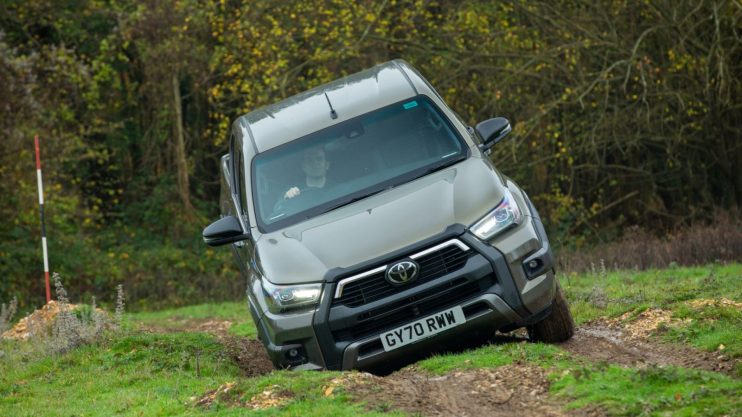
It takes chutzpah to name your top-spec truck ‘Invincible’, but the Toyota Hilux has more claim on the word than most. This, after all, was the vehicle Top Gear couldn’t kill.
As fans of Clarkson and co. will recall, Jeremy bought a second-hand Hilux from a farmer, drove it down some steps and into a tree. He then drowned it in the Bristol Channel, dropped it from a crane, crashed it through the Top Gear production office, landed a caravan on it, walloped it with a wrecking ball and set it on fire. Still it survived.
James May took over, placing the truck atop a 23-storey tower block before it was demolished with explosives. Incredibly, the Hilux emerged from the rubble and was driven into the studio. It now lives out its days at Beaulieu Motor Museum.
Invincible, then? Pretty much. But after 52 years, eight generations and 18 million sales, the Hilux now faces its toughest test: a direct nuclear strike.*
*OK, not quite, but expect a thorough road test.
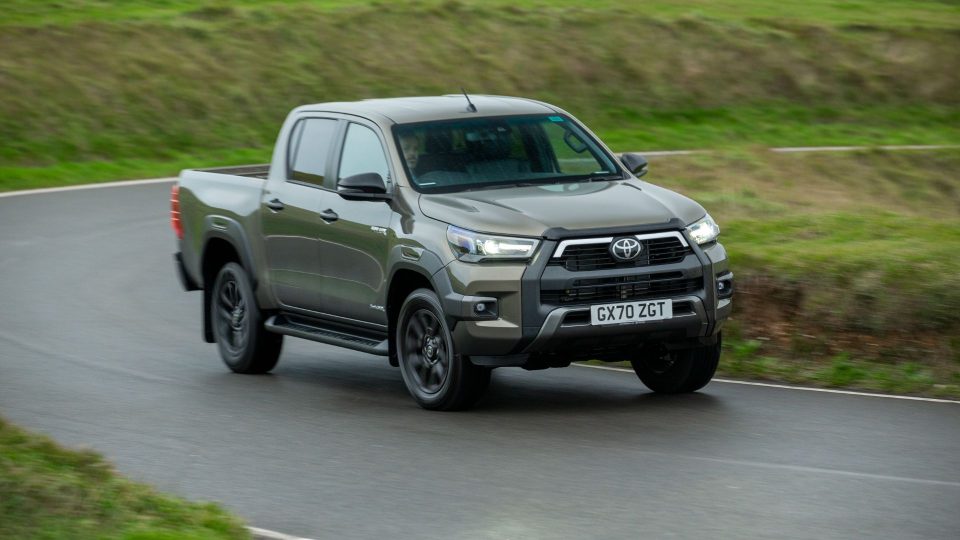
UK pick-up sales have doubled since 2012, largely thanks to ‘lifestyle’ buyers. Eighty percent of Ford Rangers sold, for example, are the fully-loaded Wildtrak version. Today’s premium pick-ups are as likely to carry surfboards as cement.
The Hilux struggled to compete in this market, so Toyota has fought back with sharper styling, more equipment, a focus on driving dynamics and a punchier 2.8-litre diesel engine. If you’re self-employed or a business owner (pick-ups are classed as commercial vehicles and thus VAT-exempt), this could be a tempting alternative to a family SUV.
The new Hilux comes in three body styles: Single Cab (two seats, two doors), Extra Cab (five seats, occasional rear doors) and Double Cab (five seats, four proper doors). There are also four trim levels: Active, Icon, Invincible and Invincible X. Prices start from £26,895, or £22,466 excluding VAT.
I’m at the opposite end of the spectrum, however, in the Invincible X auto (£40,475, or £33,783 excluding VAT). With a Double Cab and the 2.8 motor, this is as aspirational as the Hilux gets. All I need is a surfboard.

In truth, the only deep water I’ll encounter is at John Morgan 4×4 – an off-road driving centre near Arundel. But first I need to get there, which means 90 minutes on cold and congested November roads. More ‘real life’ than ‘lifestyle’.
I start at Toyota’s gleaming press workshop in Crawley, where the sensational new GR Yaris shares floor-space with a Lexus LFA and a fleet of heritage cars. Top Gear’s ‘Reasonably Fast’ GT86 is tucked in a corner, too.
The Hilux towers over all of them. With its jutting grille, squared-off wheelarches and chunky side steps, it makes ordinary cars look undernourished. This being the bells-and-whistles Invincible X, it also wears 18-inch black alloys and a beefier front bumper with a skid plate. It ain’t pretty, but it has serious rear-view-mirror presence.

Inside, the Hilux has the functional, hard-wearing feel typical of a Toyota. There’s rather a lot of leathery black plastic, but chrome accents and satin-effect trim do brighten things up. Toyota’s retro LCD clock has also made a comeback – beamed in direct from 1983 – which pleases me more than it should.
Apart from the building-site-basic Active, all models have an eight-inch touchscreen with Apple CarPlay and Android Auto connectivity, while Invincible X spec adds sat-nav and a nine-speaker JBL sound system. With ambient mood lighting and heated leather seats also standard, it’s impressively plush for a pick-up.
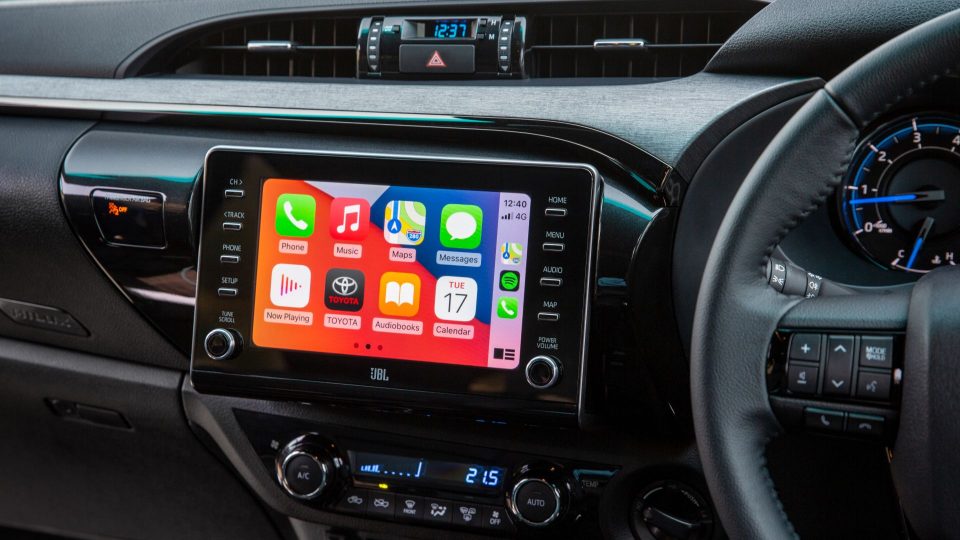
A lofty driving position offers an empowering view of the road, at eyeball-level with drivers of large 4x4s and Transit vans. But the outlook is less rosy for those in the rear, thanks to a high floor, very upright seat-backs and limited headroom for anyone over six feet. Young children will love the ‘monster truck’ vibe, lanky teenagers less so.
Regardless of which engine you choose, the Hilux can carry around 1,000kg and tow 3,500kg with a braked trailer. You’ll need a lockable hard-top or cover – available from Toyota dealers – if you plan to use it as a family car, though. Open load beds and British weather don’t mix.

The new 2.8-litre engine serves up 204hp and 369lb ft of torque. That’s sufficient for brisk progress and confident overtaking, and compares to 150hp and 295lb ft for the lesser 2.5 unit. Zero to 60mph times are 10.7 and 12.8 seconds respectively.
You rarely need to work this motor hard, yet you never forget you’re driving a truck. The gruff diesel growl becomes strained and clattery at high revs, while the traditional auto transmission isn’t as quick or slick as the dual-clutch ’boxes in many SUVs.
You can speed things up by shifting into Sport mode, but that amplifies the engine. Better to enjoy the mid-range muscle and eke out more miles per gallon. The 2,340kg Hilux manages just short of 30mpg in official tests.
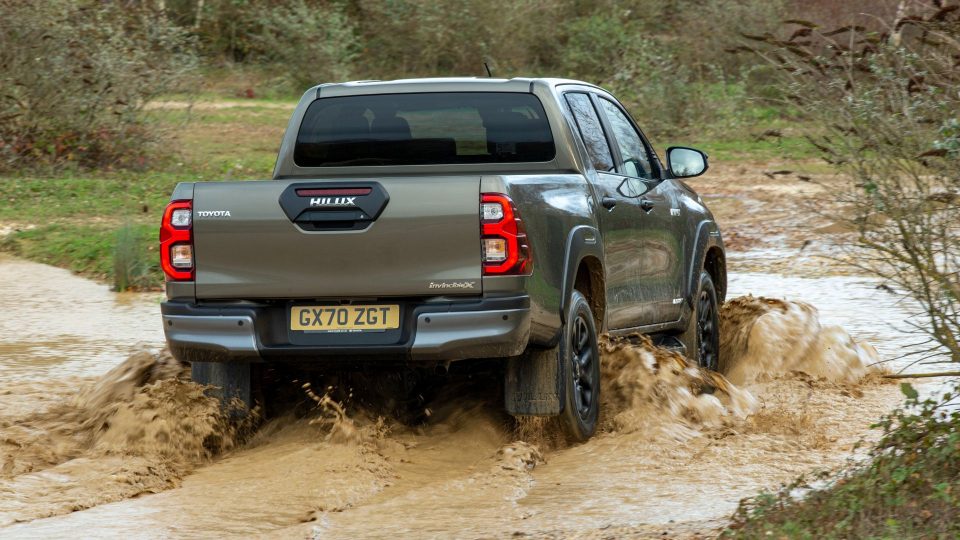
Despite that heft, Toyota has made real progress with how the Hilux handles. Yes, there’s still an old-school leaf spring at the rear (essential for durability in the world’s toughest environments, from Alaska to the Australian Outback), but this time it was tuned with the load bed empty, rather than full.
That means a more settled ride when all you have aboard is a couple of mountain bikes. It’s calmer and more car-like, without the bouncy skittishness that afflicts many pick-ups. Lifestyle types will love it, while those who prefer builder’s tea to superfood smoothies will be pleased that maximum payload is unaltered.
Another update for this Hilux is ‘Variable Flow Control’ power steering, which is lighter at parking speeds, then firms up as you go faster. It works well, feeling intuitive and confidence-inspiring on narrow country lanes. It still doesn’t offer the smoothness and civility of a well-sorted SUV, but for some that’s part of the appeal.
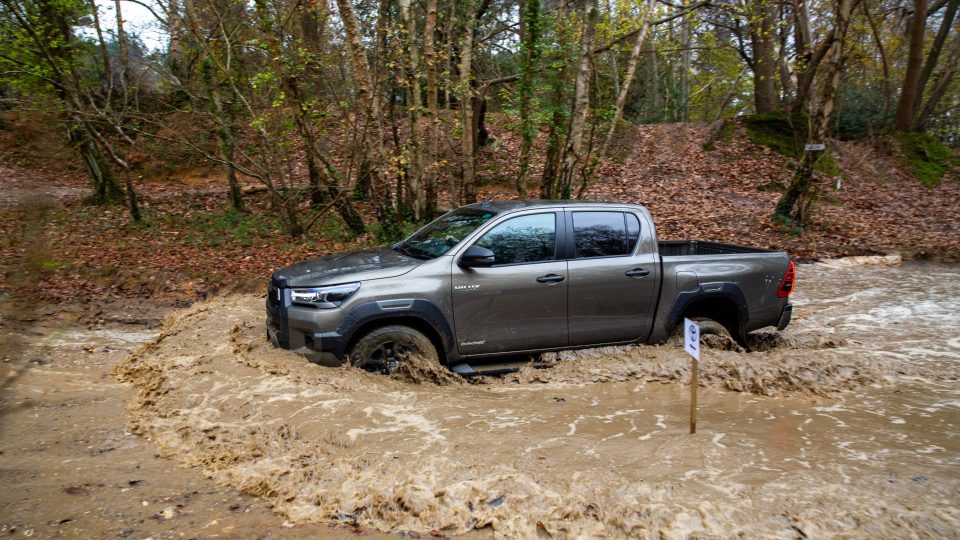
Unlike many high-riding vehicles we could mention, Hiluxes really do get driven off-road. Indeed, a modified version won the gruelling Dakar Rally last year.
John Morgan’s site isn’t quite the Sahara, but it does contain plenty of steep inclines, deep water splashes and axle-twisting bumps. The recent rain has made everything a lot slipperier, but Toyota’s PR man is confident the Hilux can complete the course on standard road tyres.
He’s right. Switch the transmission into ‘4L’ (four-wheel drive, low range) and it steadily pulls itself along: up hills, over wet grass and through deep ruts. There’s hill descent control for the downward slopes, too – offering safe, controlled progress without risk of locking the brakes and skidding.
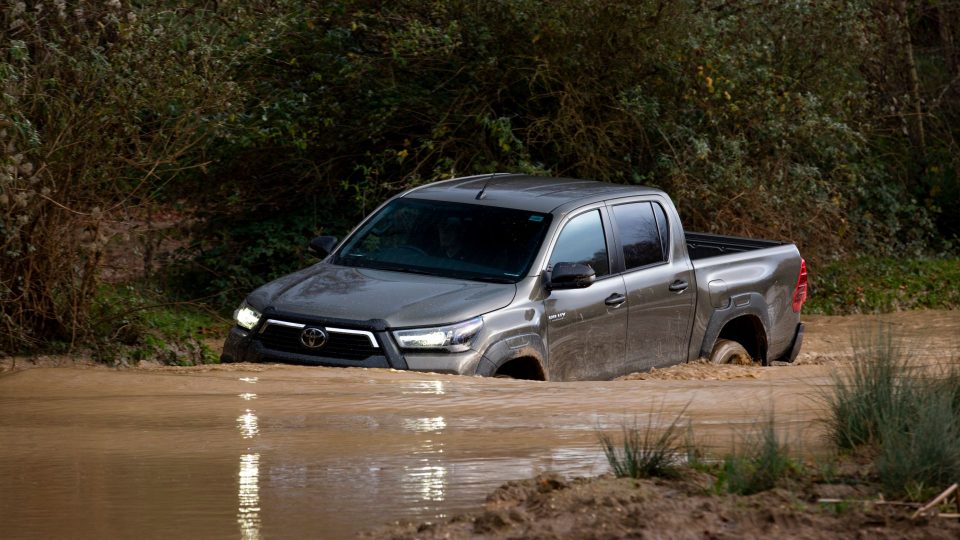
One rough-and-tumble section of the course tests axle articulation. It would be impossible without traction control or a locking differential to prevent individual wheels spinning. Fortunately, the Hilux has both. It copes far better than my stomach, which begins to regret the XL burger I’ve just eaten.
Lastly, there are the water holes, which fully test the Toyota’s 700mm wading depth (the original Land Rover Defender offered 500mm, the new one 900mm). Keen not to go full ‘Bristol Channel’, I maintain a steady speed and push a bow wave, watching the muddy water lap at the doors. It almost feels too easy.
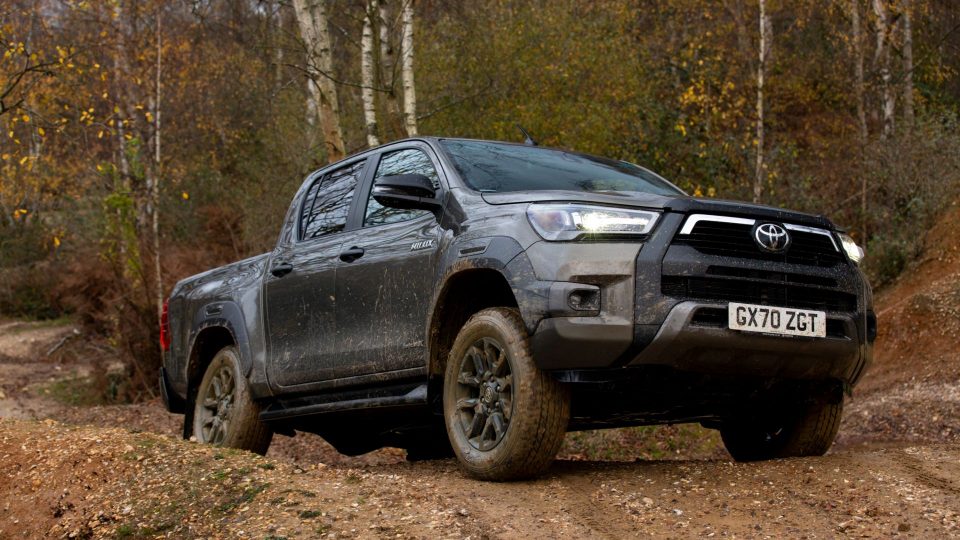
The Hilux is the four-wheeled equivalent of a Swiss army knife. It can play the farm workhorse or the school-run shuttle, the daily driver or the weekend toy. To a certain extent, that’s always been the case, but the latest refinements make it a more polished all-rounder.
No doubt, one of its key selling points is that potential VAT saving. If you are a PAYE employee, an SUV or estate car is likely more comfortable, easier to park and cheaper to run. More fun, though? Probably not. The idea of driving a life-size Tonka toy has plenty of appeal.
With the Mercedes X-Class killed off, the Mitsubishi L200 on its way out and the Nissan Navara of pensionable age, the Hilux squares up against the Ford Ranger, Isuzu D-Max and Volkswagen Amarok for pick-up class honours. All are capable vehicles, but only one of them has a reputation for being invincible.
Tim Pitt writes for Motoring Research
PRICE: £40,475 (£33,783 ex.VAT)
0-62MPH: 10.7sec
TOP SPEED: 109mph
CO2 G/KM: 248-259
MPG COMBINED: 28.5-29.7